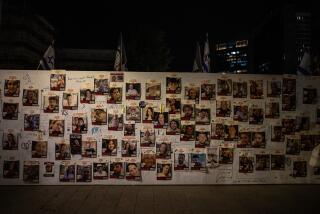Go on the offensive against terror
The bombings in London demonstrate the perils of playing defense, rather than offense, in the war on terrorism. Yet almost four years after the Sept. 11 attacks, many of our political leaders have become complacent. Prominent Democrats, such as Jimmy Carter and once-again presidential candidate Joe Biden, demand the closing of the Guantanamo Bay detention camp, but they have no idea where the Al Qaeda prisoners should go. Illinois Sen. Dick Durbin compares American guards there to Nazis or Soviets and wants terrorists treated as civilians, not enemy combatants.
For its part, the administration has emphasized its successes in capturing Al Qaeda leaders and disrupting cells, such as the recent arrests of suspected Al Qaeda terrorists in California.
Our problem is that we still think of Al Qaeda as organized along the lines of a national army or an organized crime family, with a top-down hierarchy, chains of command and officers and foot soldiers. Unfortunately, however, Al Qaeda does not resemble the Corleone family or the Sopranos.
A pyramid-shaped hierarchy would have collapsed after suffering the kinds of losses inflicting by the armed forces and the CIA -- thousands of operatives killed, two-thirds of its leadership killed or captured and its bases and infrastructure in Afghanistan destroyed. But Al Qaeda has demonstrated astounding resiliency. Fallen leaders seem to be quickly replaced by junior members, and the attacks continue.
These are the characteristics not of an army but of a network. A human network does not form randomly -- its nodes connect to each other for some purpose. But decentralization allows it to collect and process information from myriad sources and gather the collective efforts of thousands located in different places. If a node or hub disappears, new ones take its place, making networks resistant to attack.
Al Qaeda is just such a network. Its nodes are terrorists brought together through violent Islamic fundamentalism, and its hubs are planners like Khalid Shaikh Mohammed or Ramzi Binalshibh.
While Osama bin Laden is its symbolic or even spiritual leader, Al Qaeda’s cells appear to have the authority to plan and launch terrorist attacks on their own. Understanding terrorist organizations as networks provides us with new ways to go on the offensive.
Most directly, the U.S. should destroy the hubs of the network. Only a coordinated, simultaneous attack on several major hubs will leave a network in isolated and relatively harmless pieces.
Can we do this? In wartime, the military may legally kill members of the enemy’s armed forces. If we are at war, the U.S. can carry out selective attacks on Al Qaeda’s senior members, such as the 2002 Predator missile strike in Yemen. If we’re not at war, we may have to rethink the 1970s-era presidential order banning assassination.
To succeed more completely, we must carry out attacks on its leaders simultaneously. That is why it is critical to continue treating the war on terrorism as a war and not as crime, as many in the liberal media and academia urge.
Second, the U.S. could give Al Qaeda some competition. One way to destroy a network is to cause its nodes to switch allegiances, much in the way that competitors in the computer market seek to convince users to switch products. Arguments that the U.S. must bring democracy and capitalism to the Middle East, in order to provide a productive alternative for young Muslim men, are efforts to create a Western-style social network.
This could require a change in the way the United States deals with Islam. Under the Constitution’s religion clauses, government neither can support nor interfere with religion -- as the Supreme Court has reminded us. To create an alternative network, however, the U.S. must discredit Al Qaeda’s fundamentalist vision of Islam, and it must support moderate versions compatible with democracy and markets. The U.S. must ask the courts to give us flexibility to combat fundamentalist Islam as it would any other hostile ideology, such as communism during the Cold War.
Another tool would have our intelligence agencies create a false terrorist organization. It could have its own websites, recruitment centers, training camps and fundraising operations. It could launch fake terrorist operations and claim credit for real terrorist strikes, helping to sow confusion within Al Qaeda’s ranks, causing operatives to doubt others’ identities and to question the validity of communications.
Renewing the Patriot Act and staying the course at Guantanamo Bay remain important tools for gaining the intelligence that can prevent another Sept. 11. But we should realize that these measures remain fundamentally defensive. In order to prevail, we must develop an offensive strategy that focuses less on controlling territory or cities, none of which Al Qaeda possesses, and more on new ways to disrupt and destroy networks.
More to Read
Sign up for Essential California
The most important California stories and recommendations in your inbox every morning.
You may occasionally receive promotional content from the Los Angeles Times.









